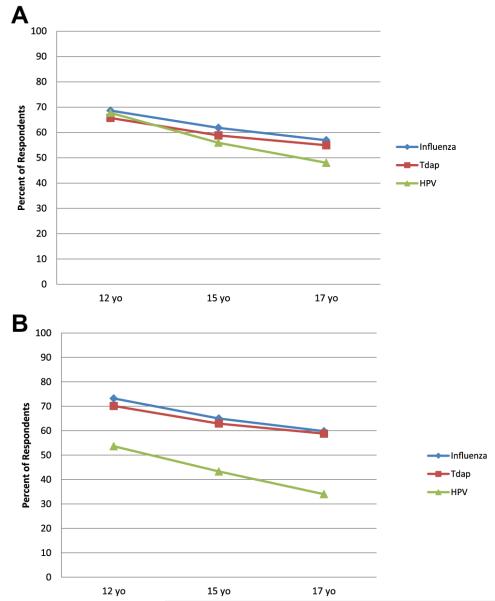Figure 2.
Proportion of respondents who reported that unaccompanied minors would not likely receive vaccine in public primary care clinics within the context of hypothetical scenarios, by reason for visit, age, and vaccine (n = 104).a (A) Routine check-up.b,c (B) Confidential sexually transmitted disease (STD) testing.c,d aRespondents are those who reported they were most familiar with practices in public primary care clinic settings; for hypothetical scenarios, respondents were asked how likely it would be for cognitively normal adolescents of differing ages (e.g., 17, 15, 12 years) to be vaccinated in their state during a routine (or confidential) visit if medically eligible, the specific vaccine (e.g., influenza, Tdap, human papillomavirus [HPV]) was available in the clinical site at no cost, and a parent/legal guardian was not available even by phone for consent. bSignificant differences in likelihood of respondents reporting that a 17-year-old unaccompanied minor would receive HPV versus influenza (p = .01). cSignificant differences in likelihood of respondents reporting an unaccompanied minor would receive each vaccine by age (12 vs. 15; 15 vs. 17; and 12 vs. 17; all p < .05). dSignificant differences in likelihood of respondents reporting that an unaccompanied minor at each age (12, 15, and 17) would receive HPV versus influenza, and HPV versus Tdap (p < .001).

